Here are click-by-click instructions on how to access more information about estimated relationships and shared DNA for your AncestryDNA matches.
Using the provided information "hidden" on your AncestryDNA match list can speed up your use of your match list and also help you learn more about genetic genealogy.
1. You'll start with your AncestryDNA® Matches list
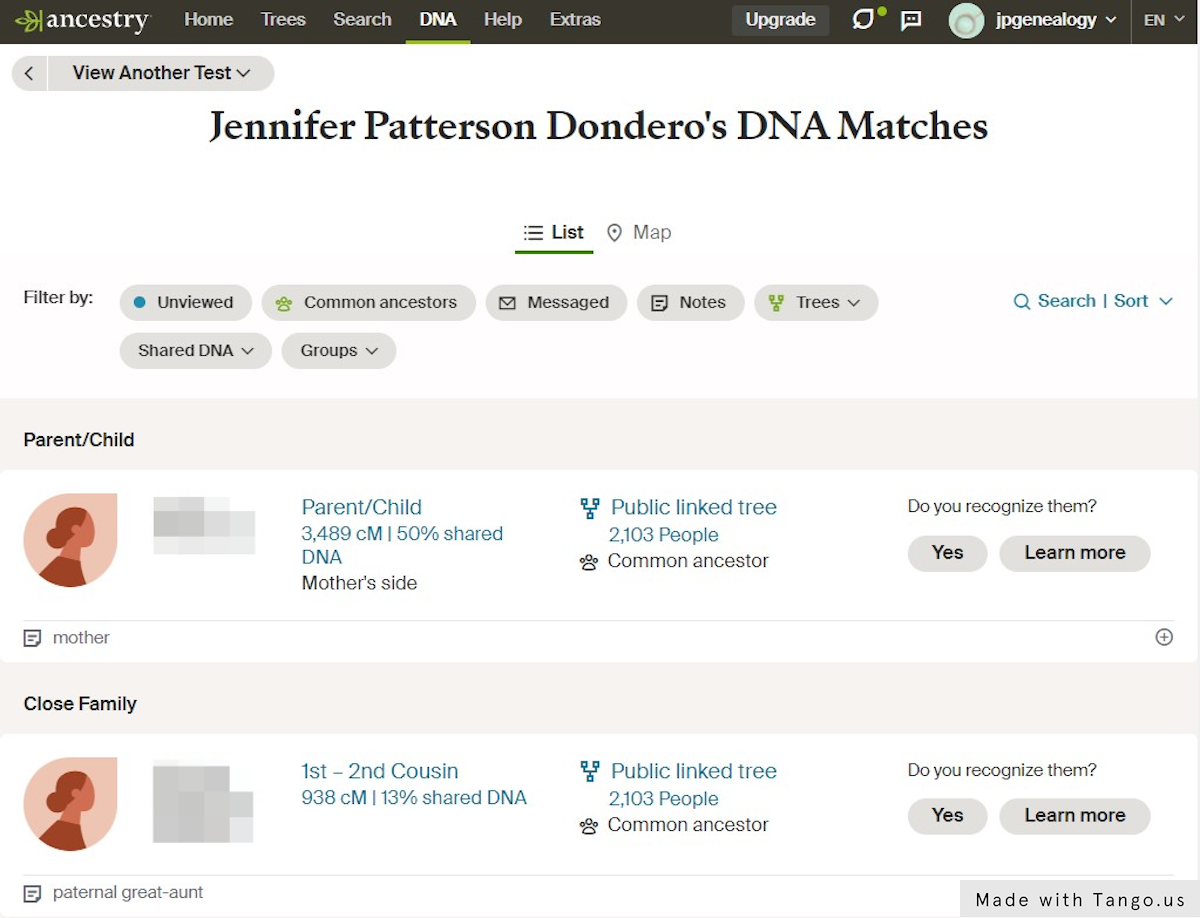
2. Click on the amount of shared DNA for the match of interest

3. A pop-up will appear with details customized to that match
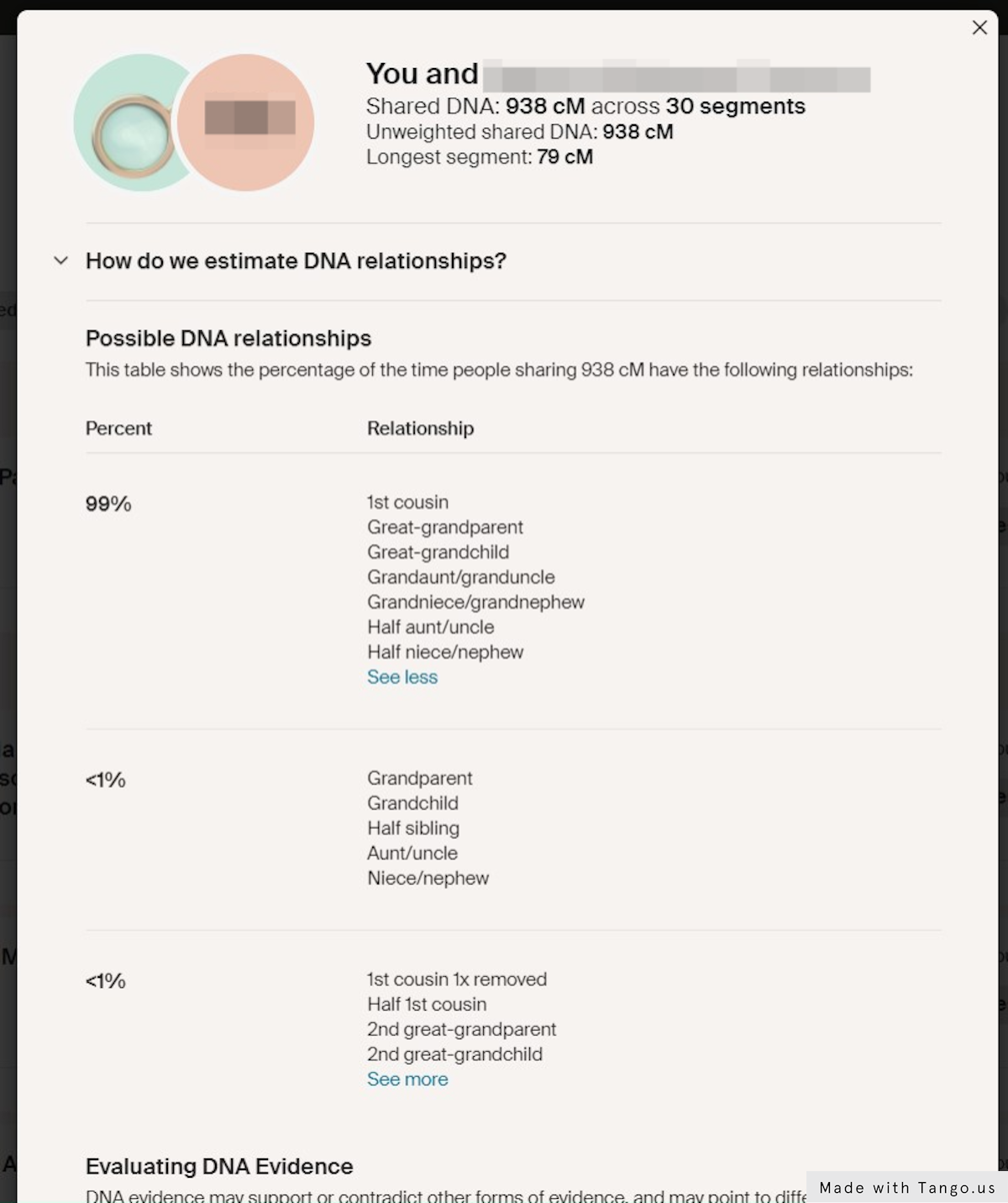
4. Click on See more if needed.
The list of relationships possible may be longer than can appear by default. Make sure you see all the options.
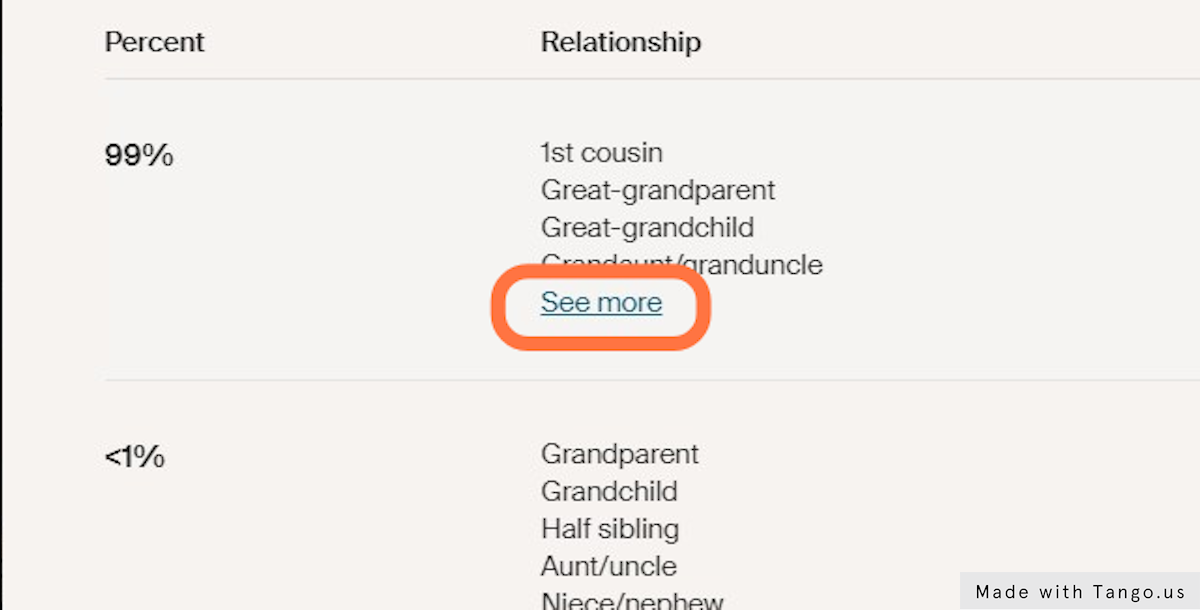
5. Review the options.
The percentage indicates how likely each group of relationships are. You need to decide the most likely relationship based on what you know about the test-taker and the match.
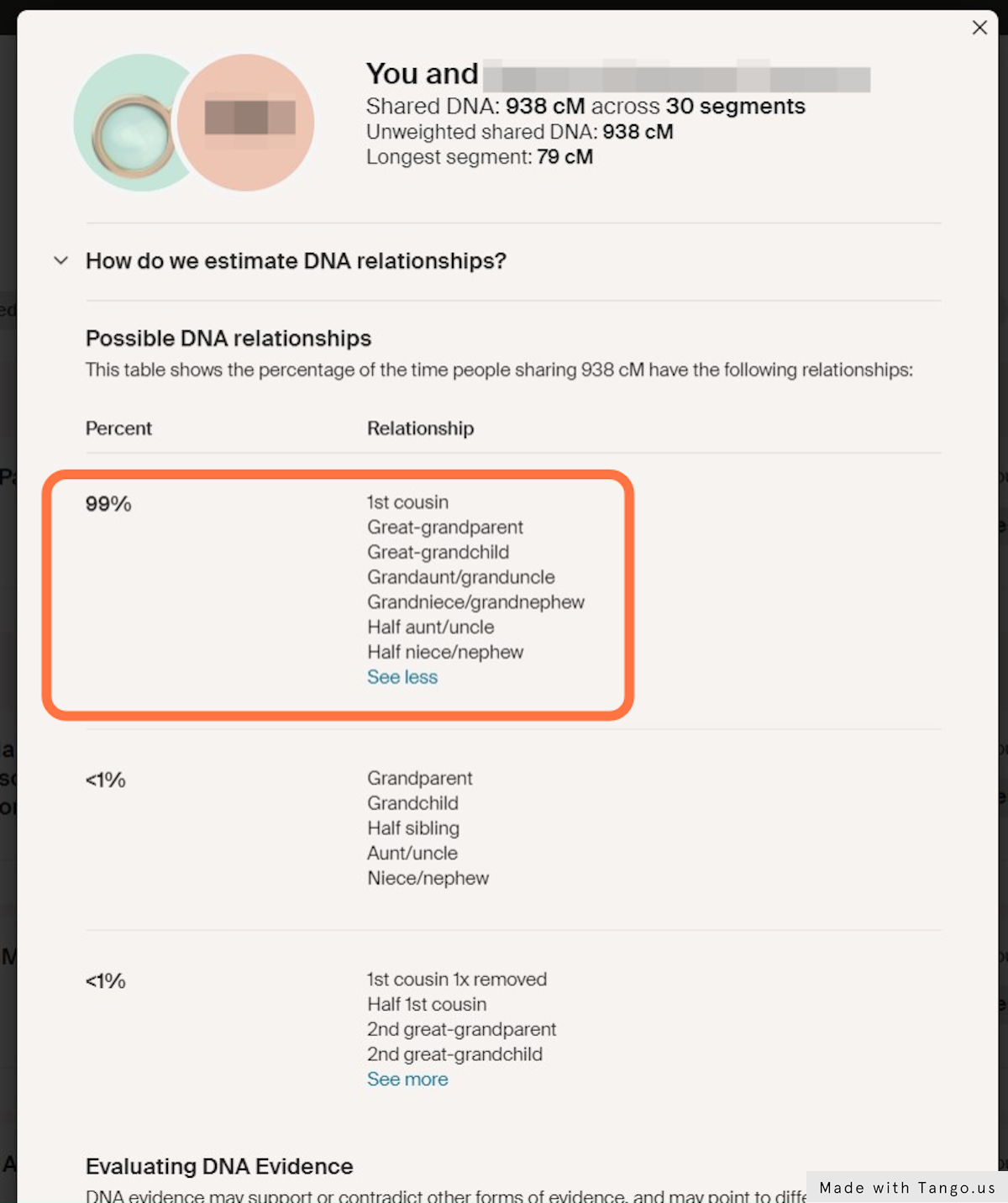
The less DNA shared, the more possible options there will be.
Build trees for your matches and learn to do DNA analysis to determine the actual relationship or even a few most likely relationships for more distant matches.
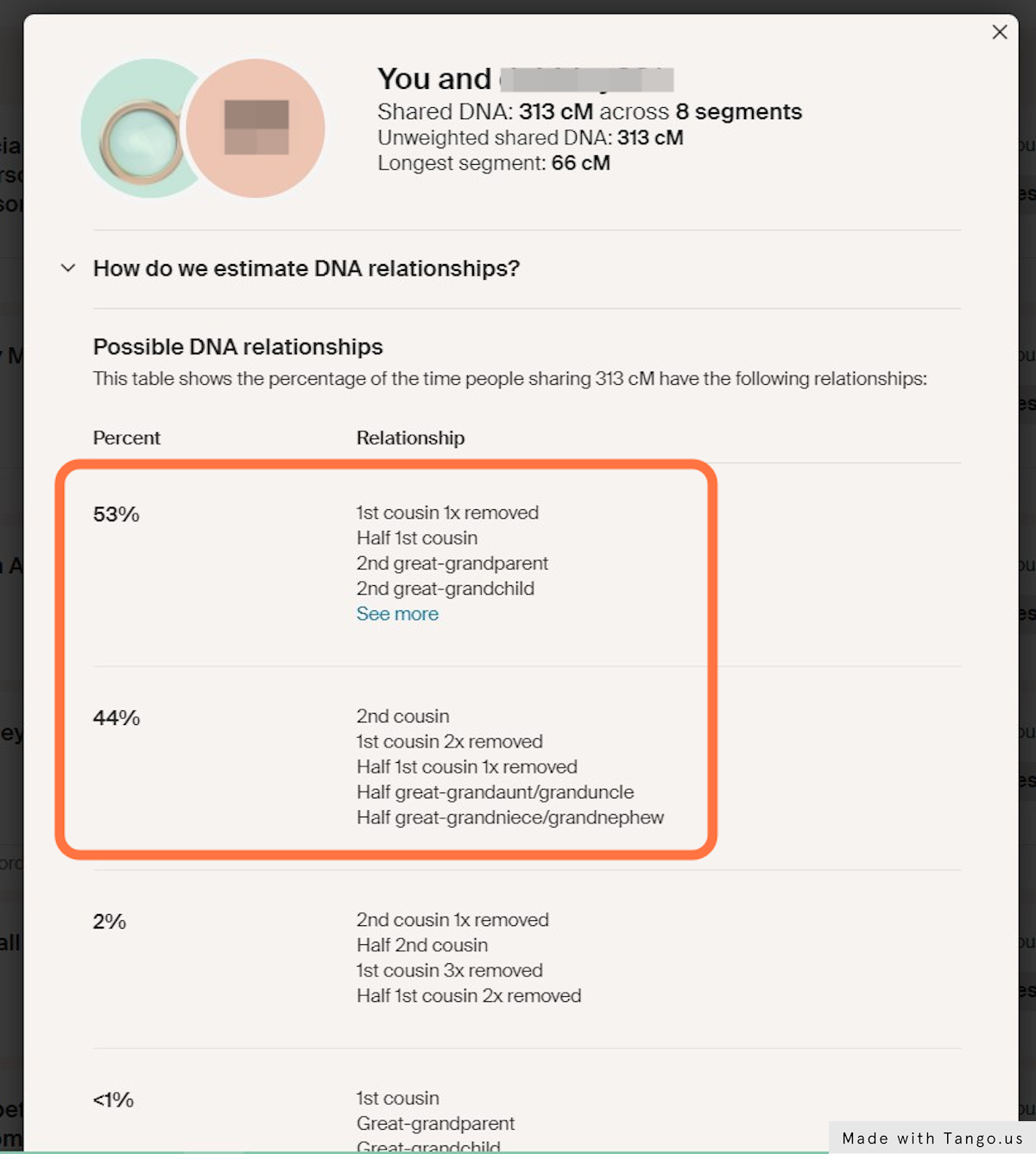
Example of a more distant match.
Although the percentages vary between 11% and 35% in this example, all of these relationships are possible if you know nothing about this match. These are estimates and DNA inheritance is completely random. Additionally, sharing DNA from more than one ancestor (i.e. from ancestors in different branches) also affects the estimates.

Click on the caret to learn more about how relationships are estimated.
There's a lot of helpful information here including why you may find the amount of DNA matches share at AncestryDNA is different from results at other sites. If you are new to using DNA, make sure and read this information. In this section, the information will be the same for each match so you only need to read it once.
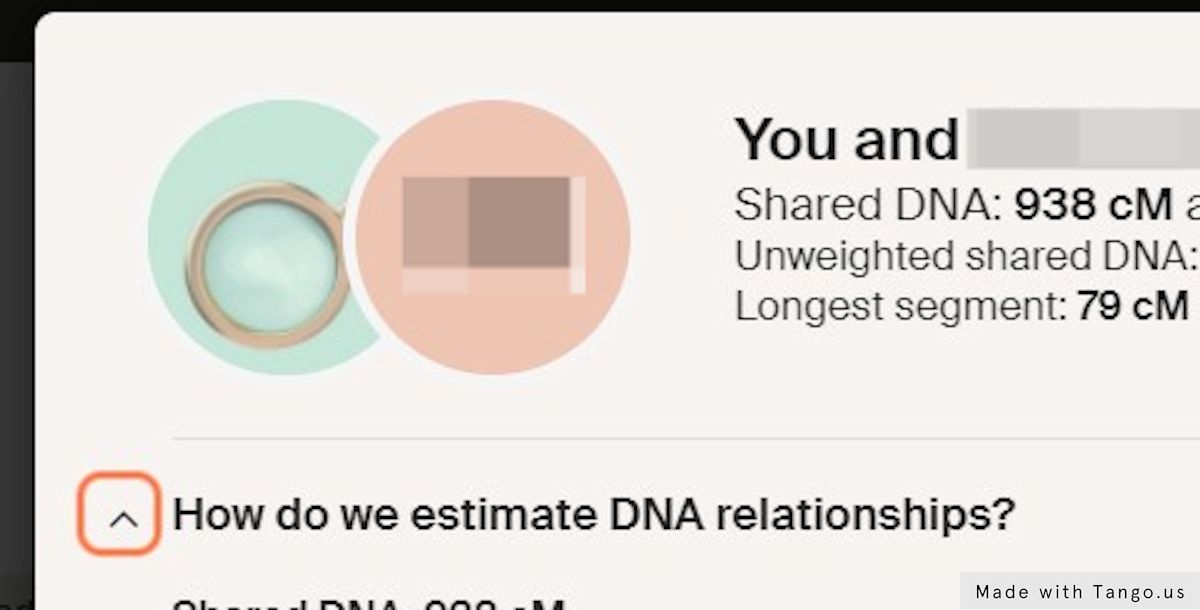
Option 2: Click on the relationship estimate to see the same information.










